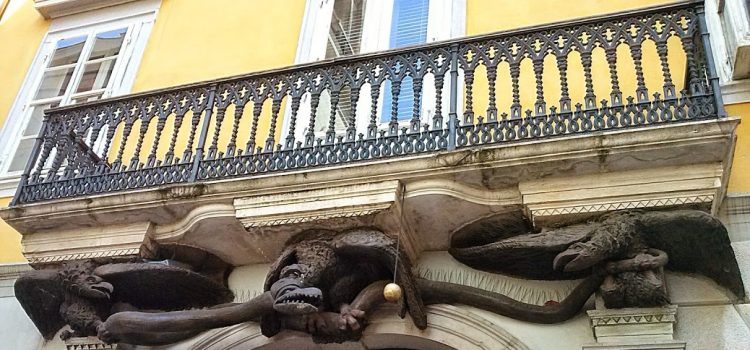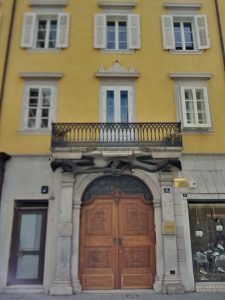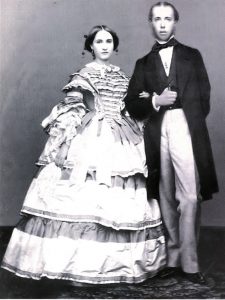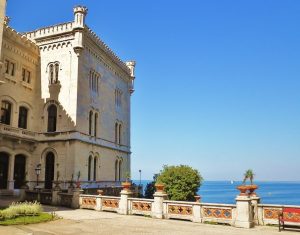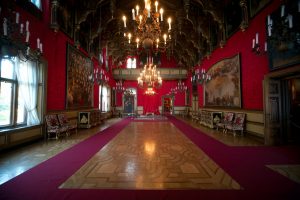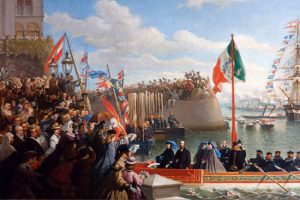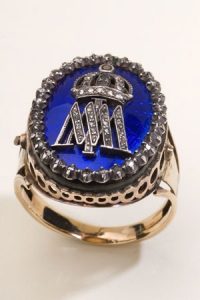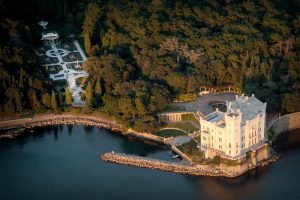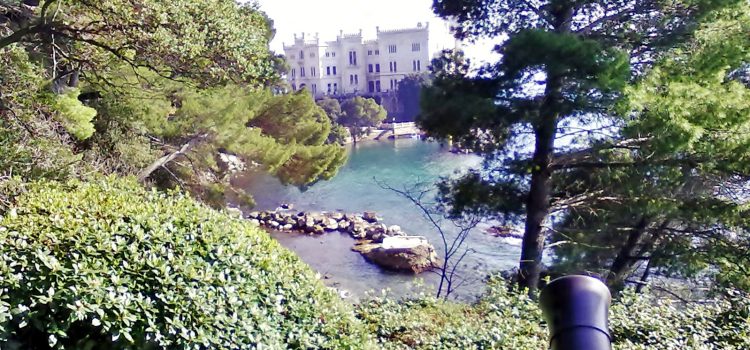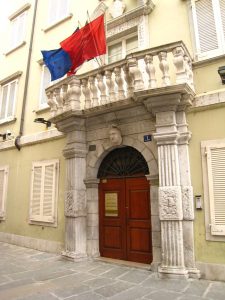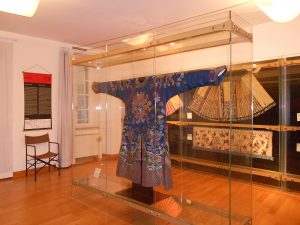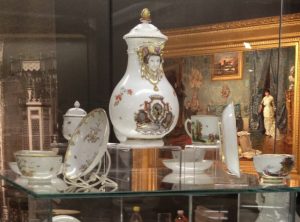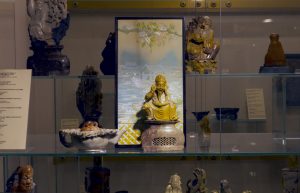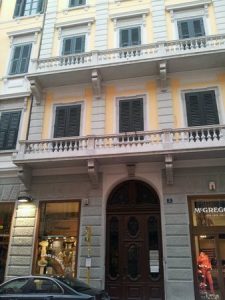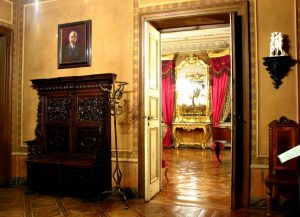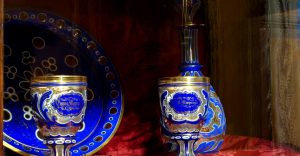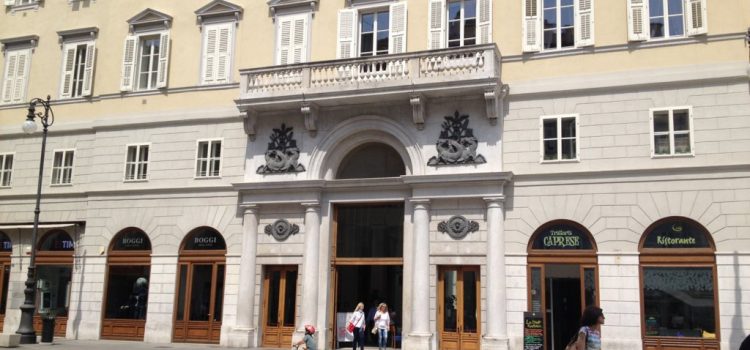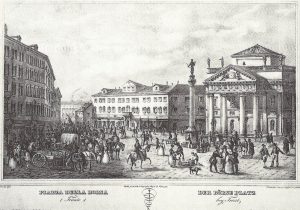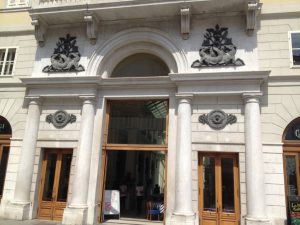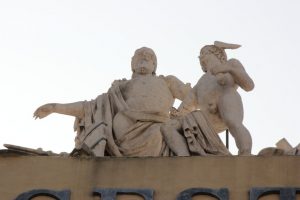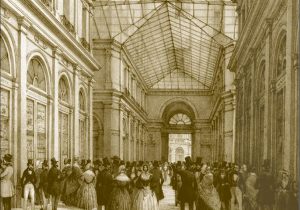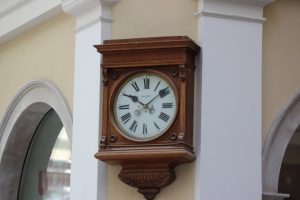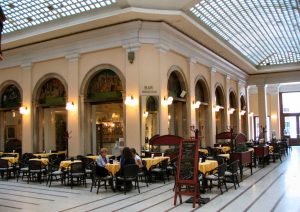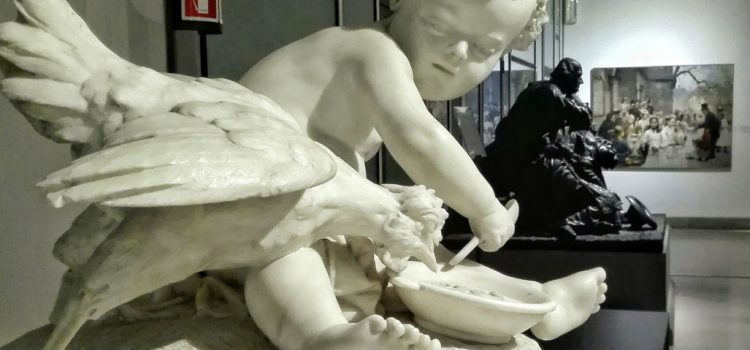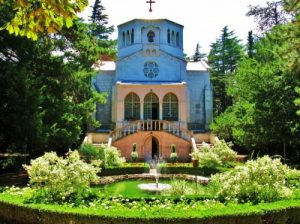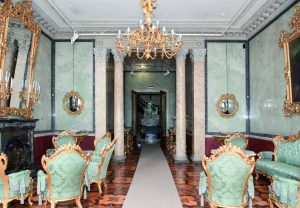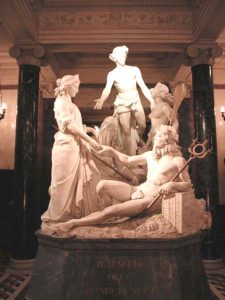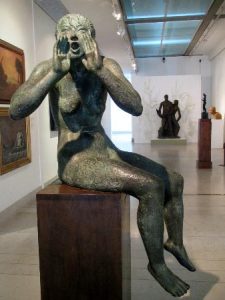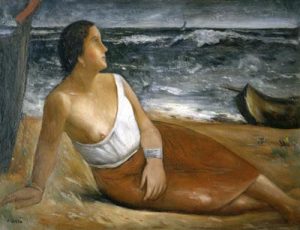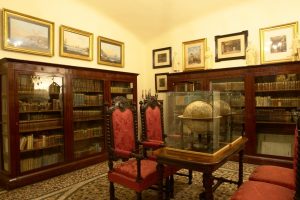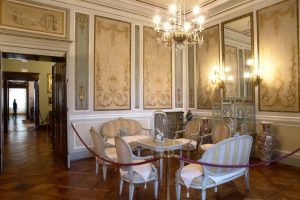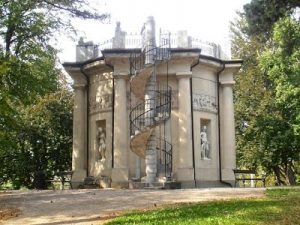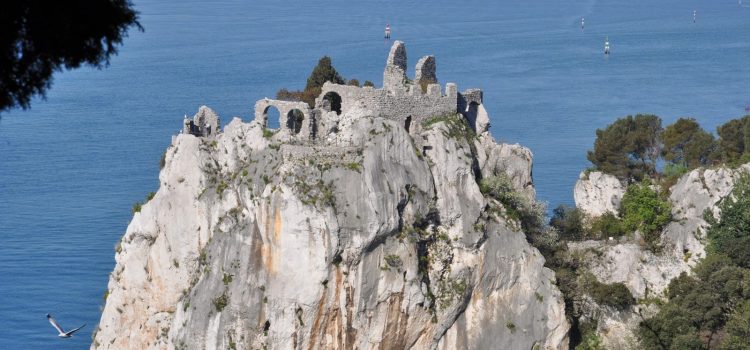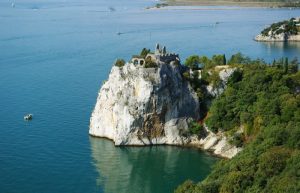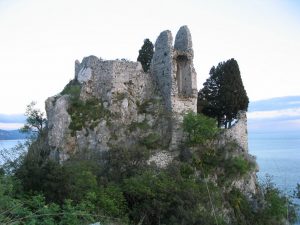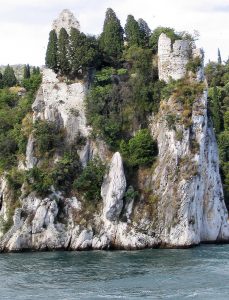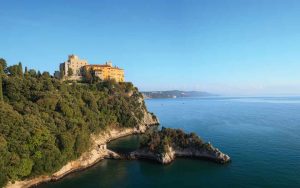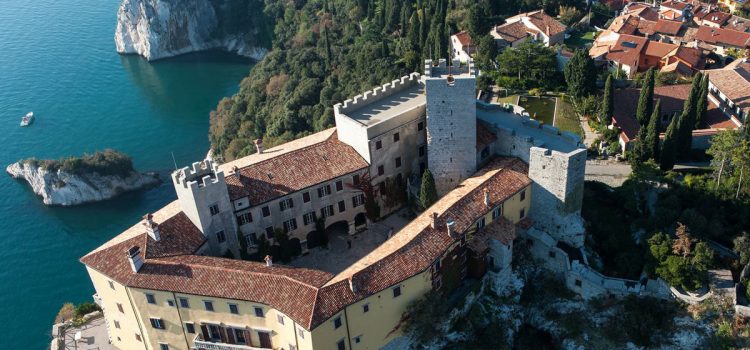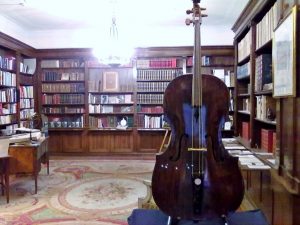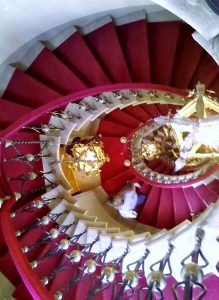LA CASA DELLE BISSE -TRIESTE
CASTLE OF MIRAMARE – TRIESTE
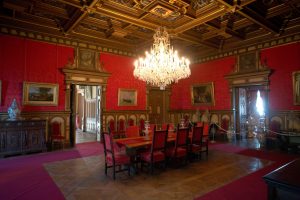 Inside, the Castle was divided into numerous rooms. The ground floor was intended for the couple’s residence, while the upper floor was for guests and representatives. Franz and Julius Hofmann carried out the interior decoration.The ground floor works ended in 1860, when Massimiliano and Carlotta moved to the Castle, after their decay from the office of governor of Lombardy-Veneto, while the representative rooms were completed around 1870. In 1930, part of the representative floor was used as the residence of Duke Amedeo d’Aosta, who lived there for about seven years and modified some rooms according to the style of the time as well as replaced Imperial-Regie insignia with Savoy crosses.
Inside, the Castle was divided into numerous rooms. The ground floor was intended for the couple’s residence, while the upper floor was for guests and representatives. Franz and Julius Hofmann carried out the interior decoration.The ground floor works ended in 1860, when Massimiliano and Carlotta moved to the Castle, after their decay from the office of governor of Lombardy-Veneto, while the representative rooms were completed around 1870. In 1930, part of the representative floor was used as the residence of Duke Amedeo d’Aosta, who lived there for about seven years and modified some rooms according to the style of the time as well as replaced Imperial-Regie insignia with Savoy crosses.PARK OF THE CASTLE OF MIRAMARE -TRIESTE
After Massimiliano’s death in the Castelletto under medical supervision, Carlotta retired showing the first signs of mental imbalance.
In addition to the Miramare Castle, Carl Junker also designed the Park and the work was entrusted in 1857 to the court gardener Josef Laube, subsequently replaced by the Bohemian Anton Jelinek. The Archduke himself defined which plants should be planted and brought 820 species of plants from nurseries and villas of Veneto,
subsequently numerous tree typologies arrived from the imperial greenhouses of Vienna of the Habsburg family, while the more exotic ones were imported following the circumnavigation of the globe with the frigate Novara.
In the park there are sculptures from the Berlin school Moritz Geiss, the greenhouses, the Swan lake, the cannons donated by Leopoldo I, king of the Belgians and the chapel of San Canciano.
Like a silent sentinel, a Ptolemaic sphinx dating back to the 2nd century BC. C., carved in pink granite, is located at the top of the quay of the Castle’s harbor. It is a precious artefact belonging to the Egyptian collection brought together by Maximilian thanks to the scientific advice of Egyptologist Simon Reinisch, and now preserved in Vienna at the Kunsthistorisches Museum.
MUSEUM OF ORIENTAL ART – TRIESTE
MORPURGO MUSEUM – TRIESTE
PALAZZO TERGESTEO -TRIESTE
REVOLTELLA MUSEUM -TRIESTE

MUSEO SARTORIO – DIMORA STORICA -TRIESTE
The library, divided into three rooms, exhibits the nineteenth-century bookcases that preserve about six thousand volumes of American literature of the eighteenth-nineteenth century and classical literature, among them a rare section of eighteenth-century Masonic works. At the center of the second library you can admire the two terrestrial and celestial globes by Wilhelm Janszoon Blaeu, dated around 1600, the official cosmographer of the Dutch States General. The exhibition room preserves the Venetian terrazzo floor intact, a couple of small bookcases and a valuable inlaid 18th century chest of drawers.

The rooms are full of paintings, paintings and drawings that have as their subject views of Italian and European cities, markets and architecture of nineteenth-century Venice.
 At the ancient stables of Villa Sartorio there is the plaster cast-glyptotheque of the Civic Museums of History and Art, set up in a dedicated space of 130 square meters. A rich sculptural collection: more than 500 pieces, from the late nineteenth century to today, and the oldest examples in the collection are four casts of works by Antonio Canova, made by the artist himself.
At the ancient stables of Villa Sartorio there is the plaster cast-glyptotheque of the Civic Museums of History and Art, set up in a dedicated space of 130 square meters. A rich sculptural collection: more than 500 pieces, from the late nineteenth century to today, and the oldest examples in the collection are four casts of works by Antonio Canova, made by the artist himself.
 In the basement you can visit a beautiful section dedicated to ceramics, about two hundred and fifty pieces, which covers a very long period of time, from the Middle Ages to the nineteenth century. The tableware on display comes from the most important Italian manufacturers and ends with examples of English production and seventy notable examples of Trieste ceramics from the last three decades of the eighteenth century.
In the basement you can visit a beautiful section dedicated to ceramics, about two hundred and fifty pieces, which covers a very long period of time, from the Middle Ages to the nineteenth century. The tableware on display comes from the most important Italian manufacturers and ends with examples of English production and seventy notable examples of Trieste ceramics from the last three decades of the eighteenth century.
Villa Sartorio became a “house museum” in 1947 thanks to the bequest of Anna Segrè Sartorio. Inside the furnishings, works of art and everyday objects coexist styles: Empire as the central hall dedicated to receptions and dances and adorned with consoles and mirrors or the music room with the piano and a series of Empire furniture including an elegant dormeuse or the Bedroom of the Duke (in 1919 it hosted Emanuele Filiberto Duca D’Aosta) with a gallery of valuable 17th-18th century paintings of sacred subjects; Neorococò the pink living room furnished with furniture inlaid with floral motifs;
Biedermeier, like the dining room with the table set and, on the sideboard-plate, the precious Meissen porcelain service, a gift from the King of Saxony Frederick Augustus II; Neo-Gothic like the Gothic Hall with its uniform decoration from floor to ceiling to furniture and reflects the adherence to the fashion of the recovery of historical styles that spread in the mid-19th century.

In a particular room there is the precious Triptych of Santa Chiara, an exceptional testimony of Venetian painting of the first half of the fourteenth century, a work of art executed in tempera on wood. Panels depict on a gold background episodes from the life of Christ, the death of Santa Chiara and the stigmata of San Francesco. With the triptych closed, St. Christopher is depicted on the left wing, and St. Sergius on the right, with the Trieste halberd in his hand.
OLD DUINO CASTLE – TRIESTE
The fortress could be accessed by a single impervious and fortified path along the surrounding wall. The tower consisted of different floors. From the remains found, such as a lectern set in the wall near a pointed window and from the frescoes left on the lower floor, it was assumed that the latter was used as a chapel, while the upper ones served for a long time as a prison. A drawbridge was located where today the entrance to the fortress is located.
 Another legend tells that Antonia, a sweet girl who fell in love with a man who seemed a benefactor but who was actually a ruthless and cruel murderer, Giovanni Sbogar, was imprisoned in the basement of the Old Castle. Unfortunately when she found out she had been robbed and attacked by her henchmen, she went mad with grief and locked herself in a convent.
Another legend tells that Antonia, a sweet girl who fell in love with a man who seemed a benefactor but who was actually a ruthless and cruel murderer, Giovanni Sbogar, was imprisoned in the basement of the Old Castle. Unfortunately when she found out she had been robbed and attacked by her henchmen, she went mad with grief and locked herself in a convent.
DUINO CASTLE – TRIESTE
Duino Castle is located in the municipality of Duino-Aurisina, a few kilometers from Trieste. In 1389, to replace the Castelvecchio dating back to the 10th century still visible on the spur of the rock overlooking the sea, Ugone di Duino, captain of Trieste, ordered the construction of a Castle which was built on the ruins of a Roman outpost incorporating a tower of the 16th century.
Owned for over 420 years by the Della Torre di Valsassina family first and then by the princes della Torre and Tasso, the history of the family is linked to the management of postal services which was exercised by the family, from 1400 onwards, for more than 350 years. in several European countries, including Italy, Austria, Germany, Hungary and the Netherlands.
The Castle during the First World War suffered extensive damage and was largely rebuilt. Since 1600, many important personalities both in the political and artistic worlds have been hosted in the castle of the princes including: Gabriele D’Annunzio, Franz Listz, Paul Valery, the empress Sissi and the archduke Francesco Ferdinando.
The Prague poet Reiner Maria Rilke, in a period of his life, was a guest of Princess Maria della Torre and Tasso to whom he dedicated the “Duino Elegies” that had been conceived and started during the long walks that the poet used to take around the Castle . In homage to the poet it was inaugurated in 1987 ”
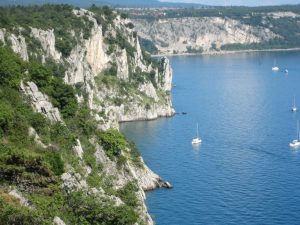
The Rilke path “, a 2-kilometer panoramic walk at the edge of the karst ridge overlooking the sea that connects the towns of Duino and Sistiana. During the route there are some war posts open to the sea. From the manor you can enjoy a wonderful view on the steep rocky walls overlooking the sea.
The Castle has a magnificent park with 21,000 flowers in regular rotation. romantic avenues full of statues and archaeological finds,
and from the wonderful terraces and from the terraces you can enjoy a wonderful view of the sea.


